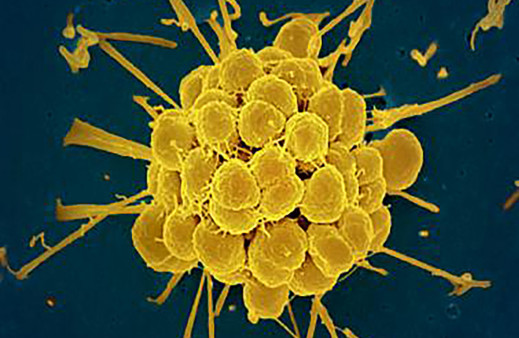A preventive vaccine for gonorrhea would be a major advance in public health, according to an editorial co-authored by NIAID Director Jeanne Marrazzo, MD, MPH, and Myron Cohen, MD, director of the Institute for Global Health and Infectious Diseases at the University of North Carolina at Chapel Hill. The editorial, published in the Journal of Infectious Diseases, provides context on new mathematical modeling projecting the cost-effectiveness of the meningitis B vaccine 4CMenB, which is currently being evaluated as a preventive intervention for gonorrhea.
Gonorrhea, a common sexually transmitted infection, afflicts more than 80 million adults each year, according to the World Health Organization. It is caused by the Neisseria gonorrhoea bacterium. Untreated gonorrhea can lead to serious and permanent health conditions, such as pelvic inflammatory disease, painful swelling and blockages in male reproductive organs, and infertility.
While usually treatable with antibiotics, N. gonorrhoeae bacteria have demonstrated resistance to most existing classes of antibiotics.
The genetic sequences of N. gonorrhoeae and Neisseria meningitidis group B, the bacteria that can cause meningitis B, are closely related, which have led researchers to explore whether the 4CMenB vaccine, approved by the Food and Drug Administration for meningitis B, might also prevent gonorrhea.
NIAID is sponsoring an efficacy study of the 4CMenB vaccine for gonorrhea prevention in more than 2,000 people aged 18-50 years in Malawi, Thailand, and the United States. The Kirby Institute is studying the same vaccine among gay, bisexual, and other men who have sex with men in Australia, and GlaxoSmithKline is studying a vaccine specifically designed to prevent gonorrhea, to assess its safety and potential efficacy. All studies are expected to report results within the next two years.
The mathematical modeling published with the editorial was led by Imperial College London with funding through the Global Health EDCTP3 Joint Undertaking and the UK Health Security Agency. The model projected how the dosing, vaccine effectiveness, health promotion, and availability for those most likely to benefit could affect the cost effectiveness of 4CMenB vaccination for gonorrhea, showing a potential benefit even if efficacy is low in forthcoming study results. Models will be able to generate a more accurate cost-effectiveness estimate once efficacy studies are complete.
This NIAID News blog post was published by the National Institute of Allergy and Infectious Diseases on May 10, 2024.







Comments
Comments